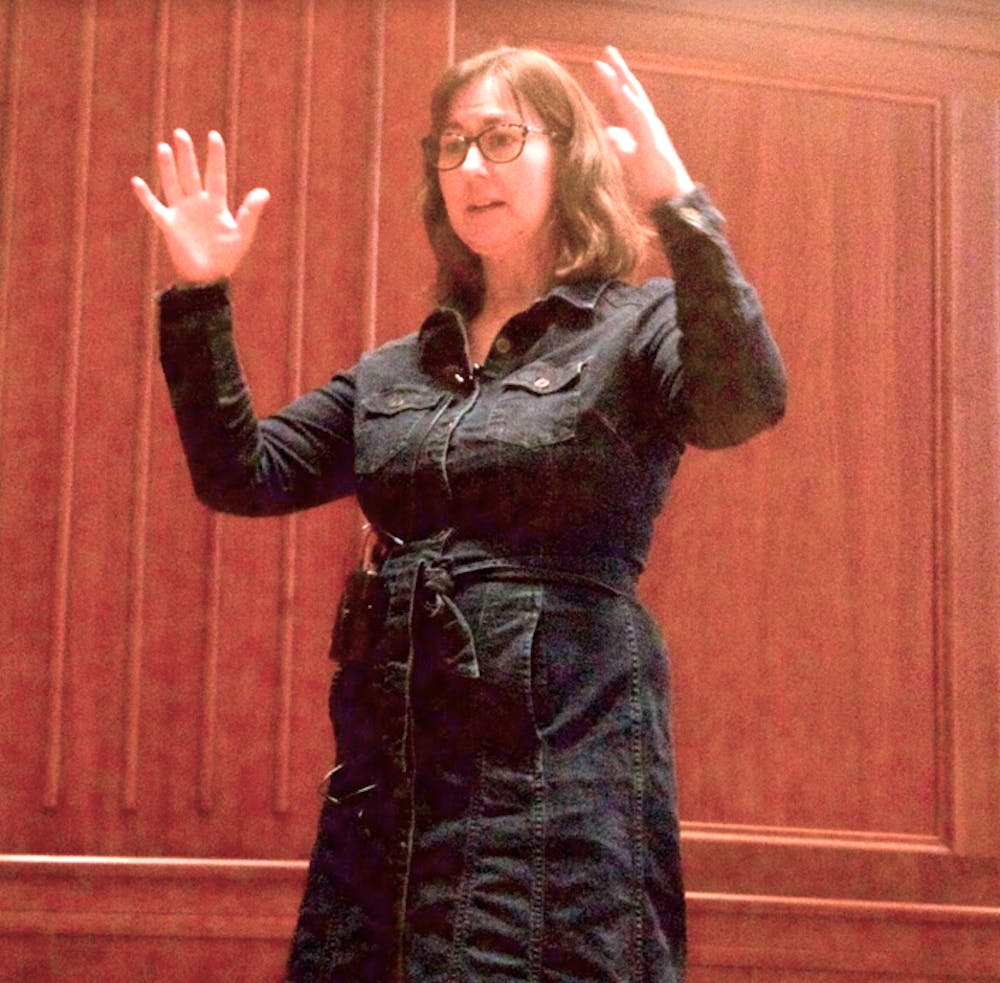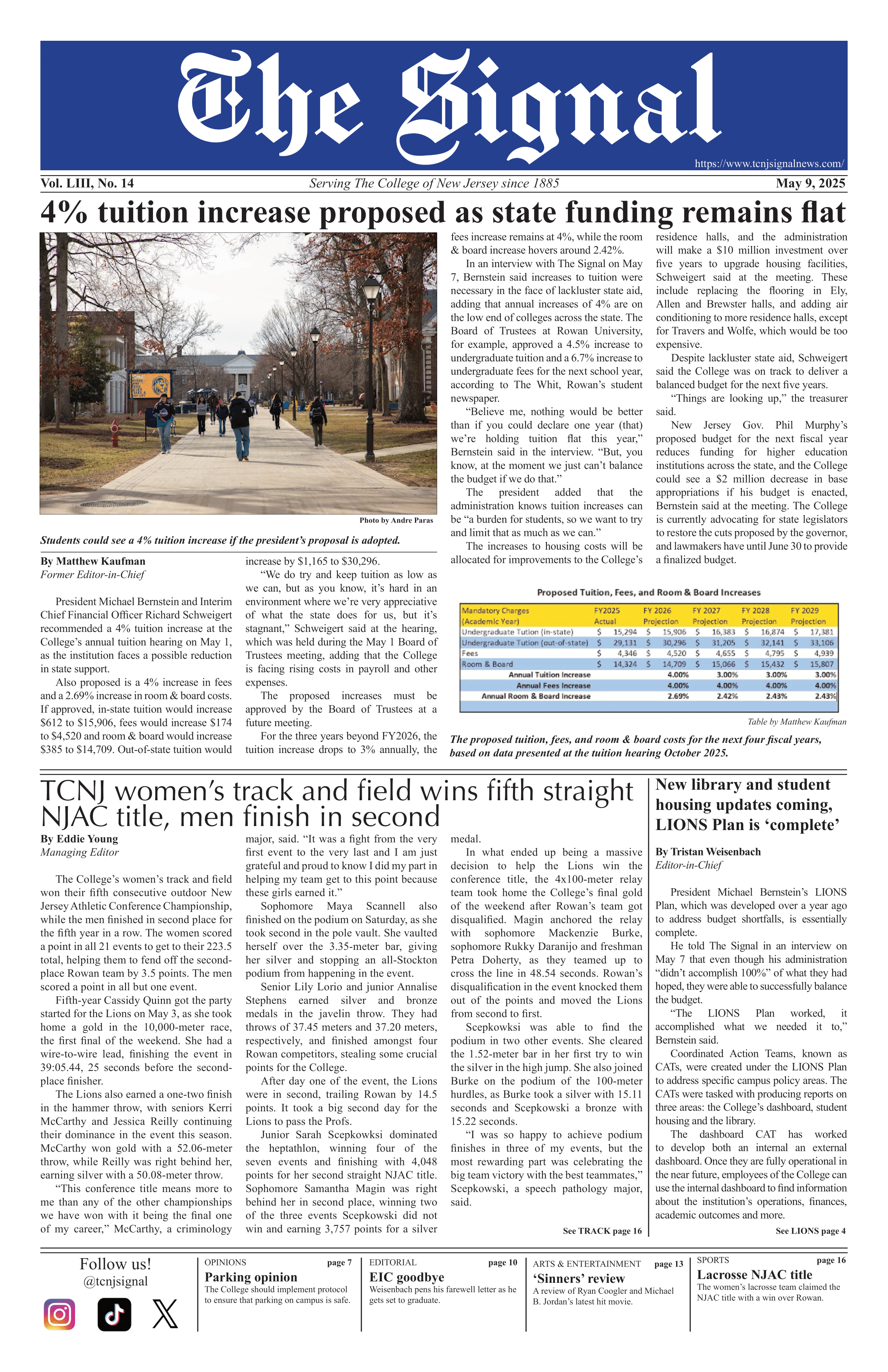By Kelly Scheper
Correspondent
In the second installment of the fall 2018 faculty lecture series, the School of Arts and Communication held a presentation called, “How DESIGN Can Save* the World” in Mayo Concert Hall on Friday, Sept. 21.
Assistant professor Belinda Haikes, who teaches in the department of art and art history, enlightened the audience on how graphic design can improve people’s lives.

Haikes has a deep interest in how technology can create cultural changes. Although the title of the presentation was “How DESIGN Can Save* the World,” she humorously mentioned the disclaimer (highlighted by the asterisk) that it might not necessarily save the world, but it can make lives better and richer in meaning by focusing on the consumer instead of the designer’s own ideas.
Haikes told the audience that graphic designers often use people’s experiences to solve problems. She provided an example of designer Deborah Adler’s prescription drug design in 2005.
According to Haikes, Adler was upset with how her grandparents’ prescription bottles were so confusing and difficult to read. At the time, the bottles had so many facts and numbers that their design confusing for consumers.
Adler partnered with Target to produce straight forward, easy-to-read labels that are still used to this day. Adler’s priority was on the patient, not her own creativity.
The audience’s attention was then directed to BBC’s website on the projection screen, which showed them images of murals illustrating the symptoms of Ebola. She mentioned how the images were of human faces, clearly depicting the symptoms, such as muscular pain, red eyes and vomiting.
When Haikes asked the audience why they thought the design was executed the way it was, a student raised her hand and said that the readers might not have the literary skills to read a text-heavy billboard and that the images were therefore more impactful.
Haikes also described to the audience the “design thinking process.” She said the designer must first empathize with the user and take his or her perspective on the topic or issue at hand. The designer must observe, engage, watch and listen without assumptions.
Haikes said that it is important for the designer to understand that they will probably have to do their work multiple times. Haikes had to redo a project about 10 or 11 times in her 2-D design course at the University of Alabama at Birmingham as an undergraduate. She understands that she and students have to embrace failure and keep trying.
She took inspiration from novelist Samuel Beckett, who said “Ever tried. Ever failed. No matter. Try again. Fail again. Fail better.”
According to Haikes, the last step in the design thinking process is the testing phase. The designer refines prototypes and solutions and learns more about the user. These steps are crucial to create effective and helpful designs.
Students were then encouraged to brainstorm what issue they would use a design to raise awareness for and what the design would include.
After the presentation, freshman journalism and professional writing major Mathias Altman-Kurosaki addressed his idea of wanting to make graphics to advertise for organizations that can help recovering addicts.
“I know multiple people that suffer from addiction,” Altman-Kurosaki said. “Maybe make something that’s targeted for organizations that can help recovering addicts.”
Haikes is passionate about her work, but knows that the consumers come first.
“You have to let go of ego,” Haikes said. “Stop falling in love with your work, instead, fall in love with the process.”







